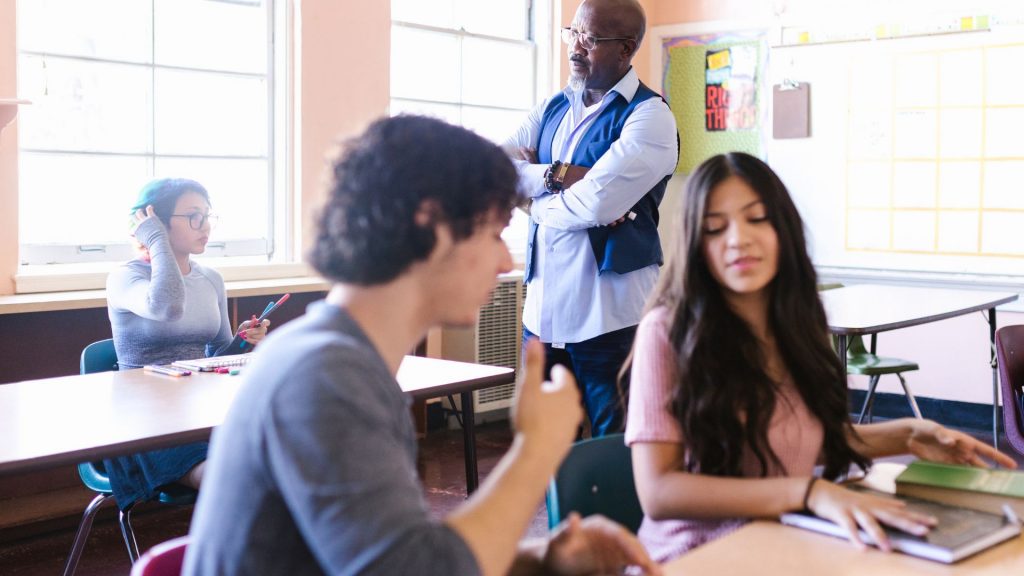Universal Design Learning: What It Means For Your Student
Universal Design Learning is a new curriculum approach teachers are using in the classroom, but is it helping students?

Universal Design Learning is a new approach to teaching. While the definition somewhat varies across educational institutes, the core foundation of this modern approach to teaching is to offer students a curriculum that utilizes more than just textbooks while also giving tests which allow students to explain their knowledge of different subjects instead of just being expected to offer up common definitions. In essence, it is a flexible teaching tactic that aids all students but also affords those with learning and/or attention issues more engaging options.
Why It’s Trending
Whereas many schools are looking into Universal Learning Design as a solution to incorporate more individualized learning practices, it also creates more accountability in the classroom, as well as evidence-based, high-quality lessons. Although still in the early stages of implementation, some educators are concerned that this new teaching approach does not alleviate pressure, reduce testing, or change tests to be more inclusive. Regardless, this new curriculum program is offering teachers and students more options to improve the learning process.
In addition, Universal Learning Design is seen as an “equitable” strategy for advancing equal opportunities for students of various backgrounds. One Walden University study measuring the successes utilized students with low incidence disabilities from grades 3-11. Noting how this method is focused on meeting students’ unique needs, it noted how the need to close the learning gap has been felt for some time, and that the need to establish credible valid teaching resources connected to a universal approach to learning by design could be improved with direct feedback.
Why The Need For The Universal Learning Design?
Within the study, the main questions asked regarded how teachers viewed the concept of Universal Learning Design, how it should be applied, and what resources are needed to do so. This 2016 study also acknowledged connections to neuroscience theories made public in 1997 and 2011. The experiences recorded were done so with the understanding that the teachers and students involved were well aware of students’ disabilities or other needs. The study size was admittedly small, but worked to identify teaching barriers and provide solid evidence of success/failure rates.
Many of the teachers involved expressed a need for more preparation time, improved technology access, and that Universal Learning Design has many steps to follow which takes added time to get used to. Most of the teachers provided negative feedback which criticized the changes that would be necessary to implement this curriculum method. Their input mainly focused on how it would affect them and their profession instead of centering on how it would affect the children they teach. There was also noted concern regarding further interference with classroom principles, as most educators are opposed to mandated teaching methods and specific applications of lessons which restrict their ability to utilize alternative teaching methods. At the end of the study’s conclusion, a strange mention of “systematic change,” also implied that this approach may not be as entirely student-focused as it was presented.
Components of Universal Learning Design

Depending on how Universal Learning Design is used, it could prove to be a helpful tool that affords students a new appreciation for learning. It is comprised of 3 main components: Representation, Action & Expression, and Engagement. While students’ interest in learning wanes when presented with only lecture formats, or too many of the same style of a lesson, representing a variety of coursework is the main aspect of this model. From videos to songs, books to hand-on projects, offering a variety of engaging material hosts the potential to incorporate action and self-expression into the curriculum.
These actions and forms of expression are the next main element of Universal Learning Design which may be the most personalized. Giving children activities to express themselves in unique ways teaches them that although students work in a group, everyone has something to contribute. This recognition and understanding empowers them to develop a love of learning which engages them and contributes to current and future successes.
Engaging students is a task educators face each school day. No matter what the weather is like, how rough a child’s home life or learning impairments may be, working to provide the best education possible is a challenge that has plagued teachers for decades as class sizes and responsibilities have increased. Universal Learning Design was specially created to give teachers more tools to handle more students with more learning styles in an effort to better serve them. How the program is introduced also matters to students.
The Drawbacks

While Universal Learning Design sounds helpful as a basic concept, some details imply that it may contradict itself in that it is supposed to offer flexible instruction to students but is somehow being considered as a potential standard. Standardized flexibility is an oxymoron which cannot possibly be introduced to public school districts as a mass solution if it truly works to personalize learning being that all classrooms are shaped differently, and each subsequently hosts various needs based on how the student body differs.
If Universal Learning Design affords teachers relaxed standards, it may prove to be a successful approach in the future, but those who are in the profession have already expressed multiple concerns as noted in the aforementioned survey. Like Common Core, Universal Learning Design is building curriculum directives around a concept instead of creating new methods based on successful practices that have proven to aid students. Common Core Mathematics was originally crafted to simplify problem-solving skills and offer students a clearer understanding of the steps needed to find solutions. Unfortunately, throughout the implementation process, Common Core became somewhat more confusing and has drawn a barrier between parents and educators, as those who were taught using different methods struggle to grasp the newer conceptual style.
Universal Learning Design has been in practice since as early as 2010. While it is not the basis for most K-12 curriculum, the idea has been studied and considered throughout the past few years. As some school officials continue to consider implementing it on a broader level, teachers have yet to express complete satisfaction with it entirely, and no known success rates have been released. Parents seeking to better understand the process may wish to test it out at home, or contact local teachers to discover if and how it is utilized at schools in their area.
Article continues below headlines

The Best Type Of Butter Dish For Your Home Kitchen
The history of the butter dish is intertwined with the history of butter itself and the evolution of dining etiquette. …
Continue reading "The Best Type Of Butter Dish For Your Home Kitchen"
The post The Best Type Of Butter Dish For Your Home Kitchen appeared first on Tell Me Best.
Continue



